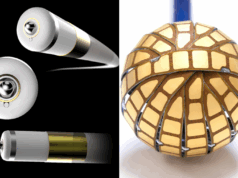Geron has announced preclinical study data showing positive effects of GRNCM1, Geron’s cardiomyocyte product derived from human embryonic stem cells (hESCs), in a small animal model of acute heart damage. The data were presented at the Keystone Symposium on Mechanisms of Cardiac Growth, Death and Regeneration in Keystone, Colorado, USA.
Administering GRNCM1 by injection into the heart resulted in greater resistance to induced arrhythmias, halted adverse cardiac remodeling and preserved mechanical function compared to controls. The results suggest that GRNCM1 positively impacts cardiac function through several mechanisms, leading to overall increased cardiac output and decreased arrhythmias in the acute infarct setting. Geron is developing GRNCM1 for the treatment of myocardial disease.
“We have previously shown in safety studies using a guinea pig model of chronic cardiac injury that there was no significant difference in the incidence of arrhythmias between recipients of hESC-cardiomyocytes and controls,” said Michael Laflamme, Geron collaborator from the University of Washington Medical School, Seattle, Washington, USA.
“Here we used a guinea pig model of acute cardiac injury and found that, compared to controls, recipients of hESC-cardiomyocytes showed fewer induced arrhythmias one month after transplantation. These results are important because following an acute myocardial infarction patients are at an elevated risk of cardiac arrhythmias, which can be fatal,” Laflamme said.
“As part of the early safety studies with GRNCM1, we wanted to test whether transplantation of the product would increase the incidence of arrhythmias, which is a potential safety concern for cardiac cellular therapies. We were pleased when the data in the guinea pig chronic injury model showed no increase in cardiac arrhythmias, and are very encouraged to learn now that our product might actually protect against arrhythmias in this acute injury model,” added Jane S. Lebkowski, Geron’s senior vice president and chief scientific officer, Cell Therapies. “The current data also suggest that GRNCM1 halts the remodeling process and preserves cardiac function. We hope to confirm these observations of increased cardiac output in our ongoing study in a swine chronic infarct model,” she added.
A guinea pig model was used to assess the potential for arrhythmias from GRNCM1 because the animal’s heart rate and electrophysiology are more similar to humans than other small animal models. Myocardial infarction was induced by cryoinjury. Seven days after injury, GRNCM1 was administered into the heart. Control groups received either non-cardiac cells derived from hESCs or vehicle only. Thirty days after administering the cells, a technique called programmed electrical stimulation was used to test the heart’s susceptibility to ventricular tachycardia intentionally induced by repeated electrical stimulation of the heart under anesthesia. In the control groups, ventricular tachycardia was induced in 61.5% (8/13) of animals that received non-cardiac cells and 50% (7/14) that received vehicle only. In contrast, ventricular tachycardia was induced in only 6% (1/15) of animals that received GRNCM1, suggesting a protective effect against arrhythmias in this acute model.
Echocardiogram analysis across the experimental groups was performed to assess cardiac function. The results showed statistically significant improvements in left ventricular diastolic diameter, left ventricular systolic diameter and fractional shortening in animals that received GRNCM1 compared to controls. These data indicate that the remodeling process, which leads to the functional decline of the heart after myocardial infarction, might be attenuated by administering GRNCM1 in this model.
Geron is currently conducting studies of GRNCM1 in a swine model of myocardial infarction to further assess preclinical safety and efficacy of the product in an animal model with a cardiovascular system of similar size and structure to humans.









